Band-Limited Reference-Free Speckle Spectroscopy: Probing the Fluorescent Media in the Vicinity of the Noise-Defined Threshold
Abstract
1. Introduction
2. BLRFS Principles
2.1. Basic Relationships of the BLRFS Technique
2.2. Intrinsic Noise Reduction in the BLRFS Technique
2.3. The Effect of a Finite-Sized Light-Collection Zone
3. Experimental Technique
3.1. BLRFS Bench-Top Instrumentation and Probing Technique
3.2. Sample Preparation and Characterization
4. Experimental Results
5. Discussion of the Results
5.1. The Wavelength-Averaged Dispersion of the Third-Order Statistical Moments of Intensity Fluctuations
5.2. Influence of the Optical Transport Parameters of the Examined Systems
5.3. Comparison with Other Experimental Data
6. Conclusions
Author Contributions
Funding
Conflicts of Interest
References
- Maret, G.; Wolf, P.E. Multiple light scattering from disordered media. The effect of Brownian motion of scatterers. Zeitschrift für Physik B Condensed Matte 1987, 65, 409–413. [Google Scholar] [CrossRef]
- Pine, D.J.; Weitz, D.A.; Chaikin, P.M.; Herbolzheimer, E. Diffusing wave spectroscopy. Phys. Rev. Lett. 1988, 60, 1134–1137. [Google Scholar] [CrossRef] [PubMed]
- Pine, D.J.; Weitz, D.A.; Zhu, J.X.; Herbolzheimer, E. Diffusing-wave spectroscopy: Dynamic light scattering in the multiple scattering limit. J. Phys. Fr. 1990, 51, 2101–2127. [Google Scholar] [CrossRef]
- Yodh, A.G.; Kaplan, P.D.; Pine, D.J. Pulsed diffusing-wave spectroscopy: Pathlengthspecific observation of speckle fluctuation spectra from dense colloids. Springer Ser. Chem. Phys. 1990, 53, 169–171. [Google Scholar] [CrossRef]
- Morin, F.; Borrega, R.; Cloitre, M.; Durian, D. Static and dynamic properties of highly turbid media determined by spatially resolved diffusive-wave spectroscopy. Appl. Opt. 2002, 41, 7294–7299. [Google Scholar] [CrossRef]
- Scheffold, F.; Skipetrov, S.E.; Romer, S.; Schurtenberger, P. Diffusing-wave spectroscopy of nonergodic media. Phys. Rev. E 2001, 63, 061404. [Google Scholar] [CrossRef]
- Wu, X.-L.; Pine, D.J.; Chaikin, P.M.; Huang, J.S.; Weitz, D.A. Diffusing-wave spectroscopy in a shear flow. JOSA B 1990, 7, 15–20. [Google Scholar] [CrossRef]
- Bicout, D.; Maynard, R. Diffusing wave spectroscopy in inhomogeneous flows. Physica A 1993, 199, 387–411. [Google Scholar] [CrossRef]
- Heckmeier, M.; Skipetrov, S.E.; Maret, G.; Maynard, R. Imaging of dynamic heterogeneities in multiple scattering media. JOSA A 1997, 14, 185–191. [Google Scholar] [CrossRef]
- Viasnoff, V.; Lequeux, F.; Pine, D.J. Multispeckle diffusing-wave spectroscopy: A tool to study slow relaxation and time-dependent dynamics. Rev. Sci. Instrum. 2002, 73, 2336–2344. [Google Scholar] [CrossRef]
- Durian, D.J.; Weitz, D.A.; Pine, D.J. Multiple light-scattering probes of foam structure and dynamics. Science 1991, 252, 686–688. [Google Scholar] [CrossRef] [PubMed]
- Zakharov, P.; Scheffold, F. Monitoring spatially heterogeneous dynamics in a drying colloidal thin film. Soft Mater. 2010, 8, 102–113. [Google Scholar] [CrossRef]
- Brunel, L.; Brun, A.; Snabre, P.; Cipelletti, L. Adaptive speckle imaging interferometry: A new technique for the analysis of microstructure dynamics, drying processes and coating formation. Opt. Express 2007, 15, 15250–15259. [Google Scholar] [CrossRef]
- Romero, G.; Alanis, E.; Rabal, H.J. Statistics of the dynamic speckle produced by a rotating diffuser and its application to the assessment of paint drying. Opt. Eng. 2000, 39, 1652–1658. [Google Scholar] [CrossRef]
- Brun, A.; Dihang, H.; Brunel, L. Film formation of coatings studied by diffusing-wave spectroscopy. Prog. Org. Coat. 2008, 61, 181–191. [Google Scholar] [CrossRef]
- Bednov, A.; Ulyanov, S.; Cheung, C.; Yodh, A.G. Correlation properties of multiple scattered light: Implication to coherent diagnostics of burned skin. J. Biomed. Opt. 2004, 9, 347–352. [Google Scholar] [CrossRef] [PubMed]
- Scheffold, F. Particle sizing with diffusing wave spectroscopy. J. Dispers. Sci. Technol. 2002, 23, 591–599. [Google Scholar] [CrossRef]
- Rovati, L.; Cattini, S.; Zambelli, N.; Viola, F.; Staurenghi, G. In-vivo diffusing-wave-spectroscopy measurements of the ocular fundus. Opt. Express 2007, 15, 4030–4038. [Google Scholar] [CrossRef]
- Lee, J.Y.; Hwang, J.W.; Jung, H.W.; Kim, H.C.; Lee, S.J.; Yoon, K.; Weitz, D.A. Fast dynamics and relaxation of colloidal drops during the drying process using multispeckle diffusing wave spectroscopy. Langmuir 2013, 29, 861–866. [Google Scholar] [CrossRef]
- Ishimaru, A. Diffusion of light in turbid materials. Appl. Opt. 1989, 28, 2210–2215. [Google Scholar] [CrossRef]
- Thompson, C.A.; Webb, K.J.; Weiner, A.M. Diffusive media characterization with laser speckle. Appl. Opt. 1997, 36, 3726–3734. [Google Scholar] [CrossRef] [PubMed]
- McKinney, J.D.; Webster, M.A.; Webb, K.J.; Weiner, A.M. Characterization and imaging in optically scattering media by use of laser speckle and a variable-coherence source. Opt. Lett. 2000, 25, 4–6. [Google Scholar] [CrossRef] [PubMed]
- Webster, M.A.; Gerke, T.D.; Weiner, A.M.; Webb, K.J. Spectral and temporal speckle field measurements of a random medium. Opt. Lett. 2004, 29, 1491–1493. [Google Scholar] [CrossRef]
- Webster, M.A.; Webb, K.J.; Weiner, A.M. Temporal response of a random medium from third-order laser speckle frequency correlations. Phys. Rev. Lett. 2002, 88, 033901. [Google Scholar] [CrossRef]
- Zang, W.; Weiner, A.M.; Webb, K.J. Interferometry from a scattering medium. Opt. Lett. 2007, 32, 2013–2015. [Google Scholar] [CrossRef]
- Rojas, L.F.; Bina, M.; Cerchiari, G.; Escobedo-Sánches, M.A.; Ferri, F.; Scheffold, F. Photon path length distribution in random media from spectral speckle intensity correlations. Eur. Phys. J. Spec. Top. 2011, 199, 167–180. [Google Scholar] [CrossRef]
- Zimnyakov, D.A.; Vilensky, M.A. Blink speckle spectroscopy of scattering media. Opt. Lett. 2006, 31, 429–431. [Google Scholar] [CrossRef]
- Zimnyakov, D.A.; Oh, J.-T.; Sinichkin, Y.P.; Trifonov, V.A.; Gurianov, E.V. Polarization-sensitive speckle spectroscopy beyond the diffusion limit. JOSA A 2004, 21, 59–70. [Google Scholar] [CrossRef]
- Zimnyakov, D.A.; Yuvchenko, S.A.; Pavlova, M.V.; Alonova, M.V. Reference-free path length interferometry of random media with the intensity moments analysis. Opt. Express 2017, 25, 13953–13972. [Google Scholar] [CrossRef]
- Bindhu, C.V.; Harilal, S.S.; Nampoori, V.P.N.; Vallabhan, C.P.G. Studies of non-linear absorption and aggregation in aqueous solutions of rhodamine 6G using a transient thermal lens technique. J. Phys. D Appl. Phys. 1999, 32, 407–411. [Google Scholar] [CrossRef]
- Johnson, P.M.; Imhof, A.; Bret, B.P.J.; Rivas, J.G.; Lagendijk, A. Time-resolved pulse propagation in a strongly scattering material. Phys. Rev. E 2003, 68, 016604. [Google Scholar] [CrossRef]
- Kaplan, P.D.; Kao, M.H.; Yodh, A.G.; Pine, D.J. Geometric constraints for the design of diffusing-wave spectroscopy experiments. Appl. Opt. 1993, 32, 3828–3836. [Google Scholar] [CrossRef] [PubMed]
- Zimnyakov, D.A.; Chekmasov, S.P.; Ushakova, O.V.; Isaeva, E.A.; Bagratashvili, V.N.; Yermolenko, S.B. Laser speckle probes of relaxation dynamics in soft porous media saturated by near-critical fluids. Appl. Opt. 2014, 53, B12–B21. [Google Scholar] [CrossRef] [PubMed]
- Soukoulis, C.M.; Datta, S.; Economou, E.N. Propagation of classical waves in random media. Phys. Rev. B 1994, 49, 3800–3810. [Google Scholar] [CrossRef] [PubMed]
- Zimnyakov, D.A.; Yuvchenko, S.A.; Sina, J.S.; Ushakova, O.V. Effect of the “inversion” of a scattering medium in layers of close-packed titanium dioxide nanoparticles. JETP Lett. 2013, 98, 326–330. [Google Scholar] [CrossRef]
- Zimnyakov, D.A.; Pravdin, A.B.; Kuznetsova, L.V.; Kochubey, V.I.; Tuchin, V.V.; Wang, R.K.; Ushakova, O.V. Random media characterization using the analysis of diffusing light data on the basis of an effective medium model. JOSA A 2007, 24, 711–723. [Google Scholar] [CrossRef]
- Lawandy, N.M.; Balachandran, R.M.; Gomes, A.S.L.; Sauvain, E. Laser action in strongly scattering media. Nature 1994, 368, 436–438. [Google Scholar] [CrossRef]
- Scattering Mie Calculator. Available online: https://omlc.org/calc/mie_calc.html (accessed on 25 November 2019).

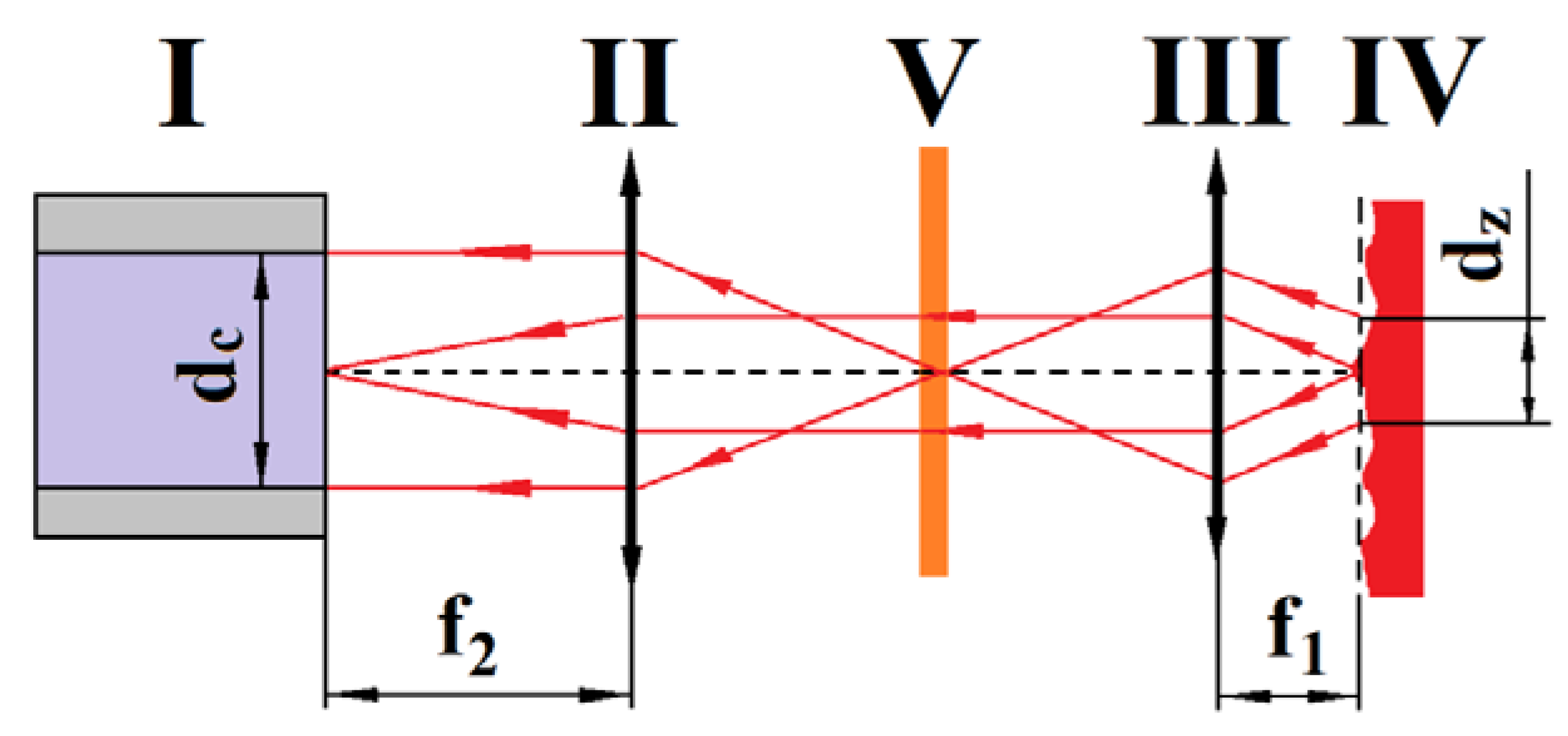

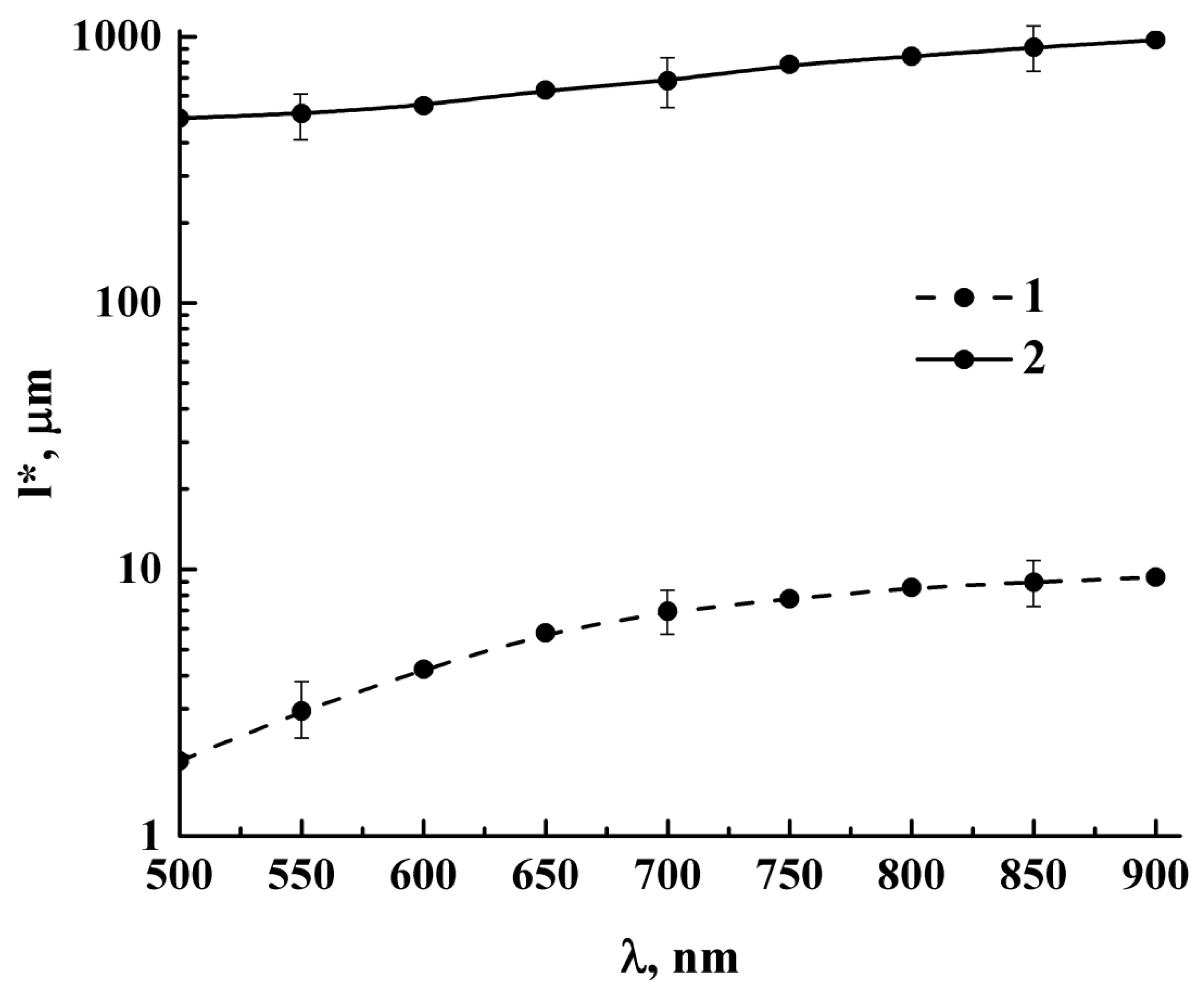
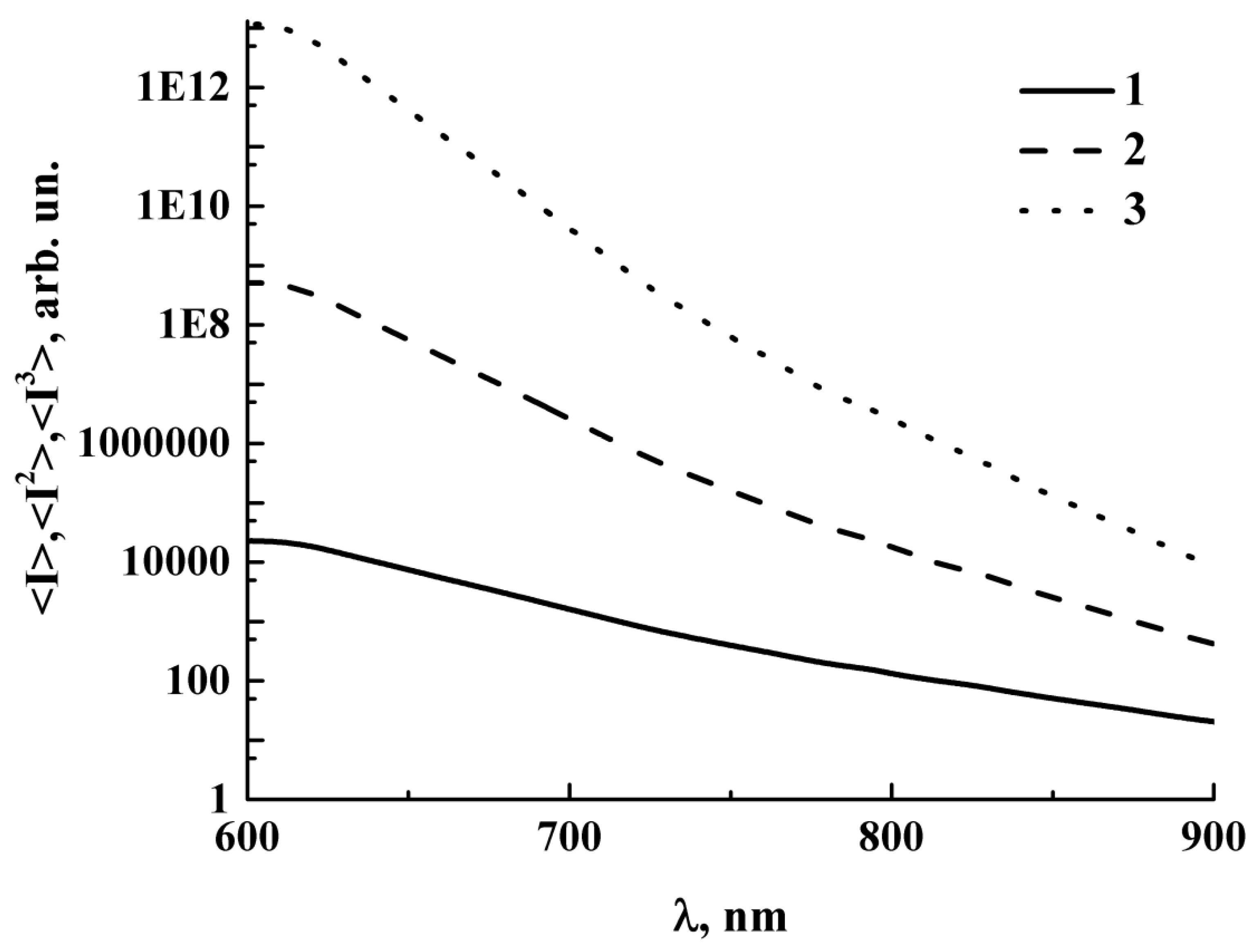
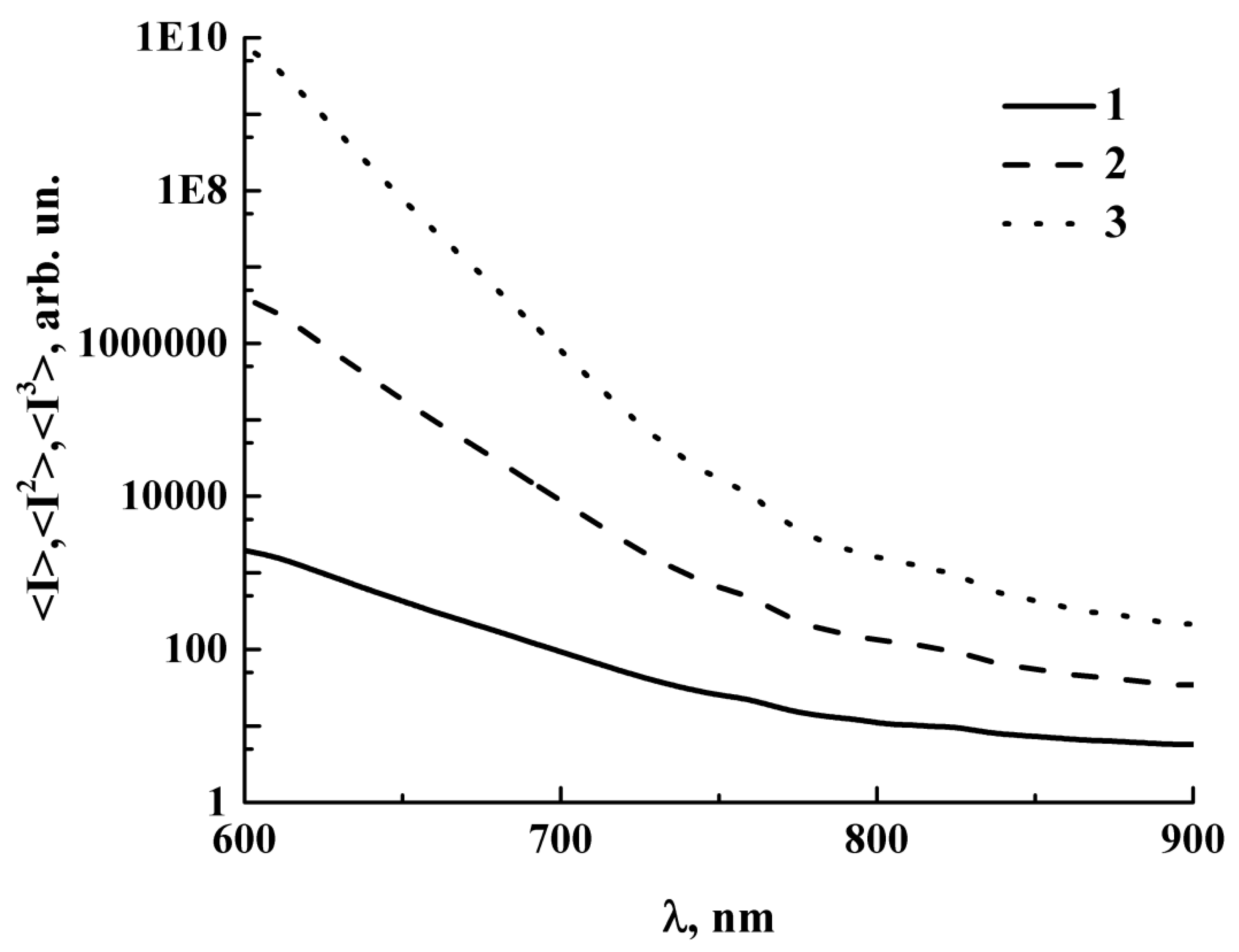
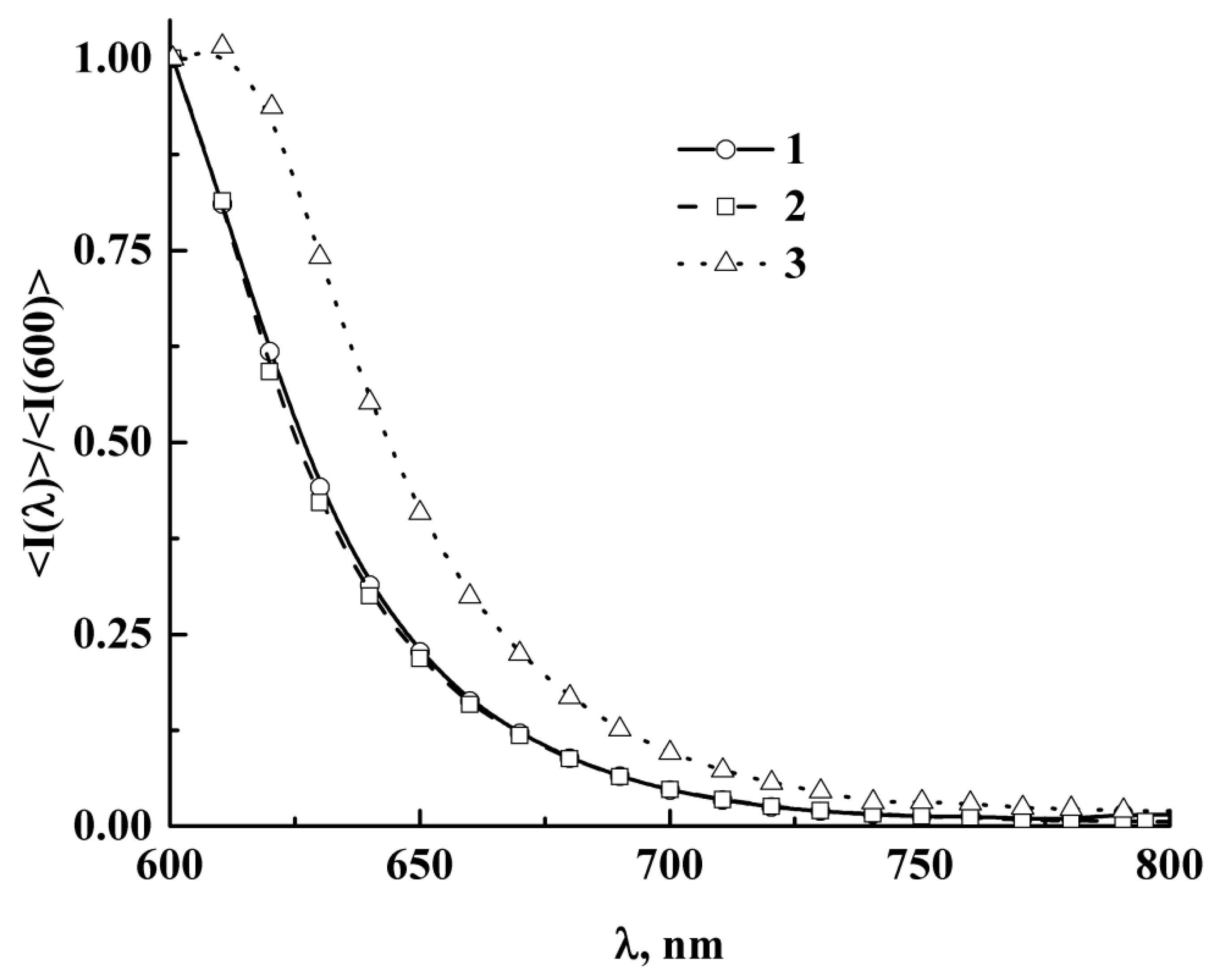
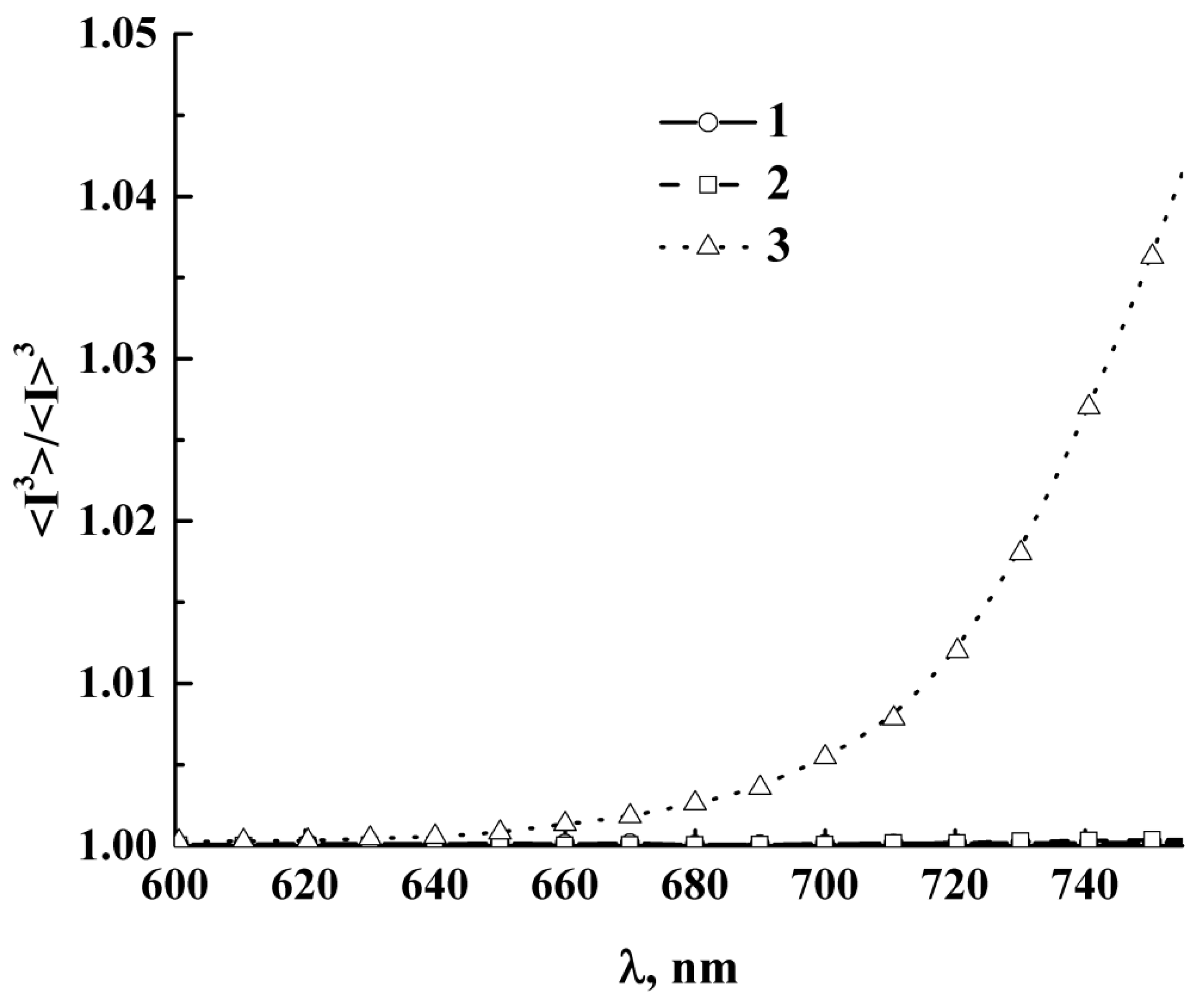
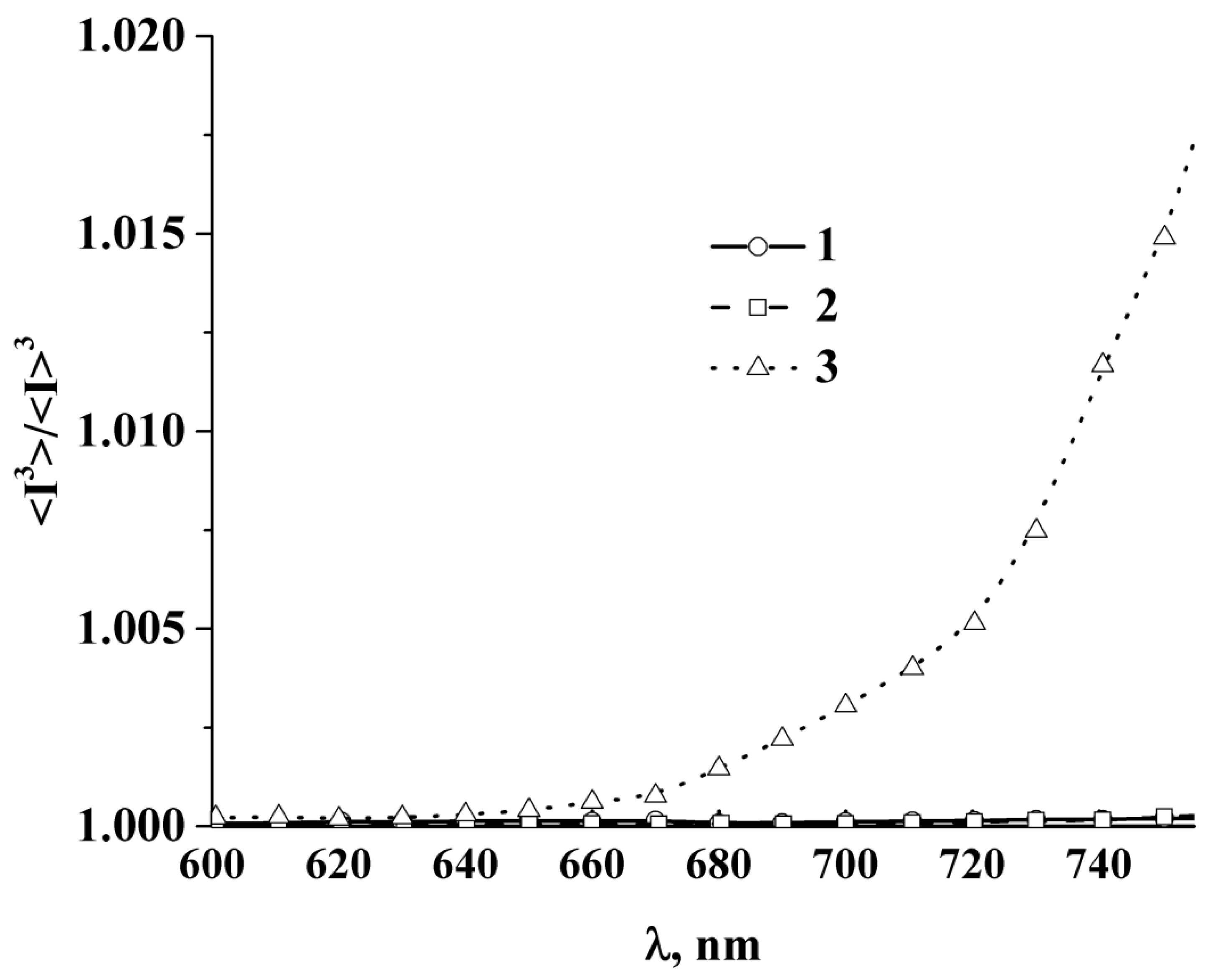

| (I), Dye Solution | (II), SiO2-Based System, Static | (III), SiO2-Based System, Scan | (IV), TiO2-Based System, Static | (V), TiO2-Based System, Scan |
|---|---|---|---|---|
| ≈1.0 × 10−6 | ≈1.53 × 10−6 | ≈97.33 × 10−6 | ≈2.40 × 10−6 | ≈240.27 × 10−6 |
© 2020 by the authors. Licensee MDPI, Basel, Switzerland. This article is an open access article distributed under the terms and conditions of the Creative Commons Attribution (CC BY) license (http://creativecommons.org/licenses/by/4.0/).
Share and Cite
Zimnyakov, D.; Isaeva, E.; Isaeva, A.; Volchkov, S. Band-Limited Reference-Free Speckle Spectroscopy: Probing the Fluorescent Media in the Vicinity of the Noise-Defined Threshold. Appl. Sci. 2020, 10, 1629. https://doi.org/10.3390/app10051629
Zimnyakov D, Isaeva E, Isaeva A, Volchkov S. Band-Limited Reference-Free Speckle Spectroscopy: Probing the Fluorescent Media in the Vicinity of the Noise-Defined Threshold. Applied Sciences. 2020; 10(5):1629. https://doi.org/10.3390/app10051629
Chicago/Turabian StyleZimnyakov, Dmitry, Elena Isaeva, Anna Isaeva, and Sergey Volchkov. 2020. "Band-Limited Reference-Free Speckle Spectroscopy: Probing the Fluorescent Media in the Vicinity of the Noise-Defined Threshold" Applied Sciences 10, no. 5: 1629. https://doi.org/10.3390/app10051629
APA StyleZimnyakov, D., Isaeva, E., Isaeva, A., & Volchkov, S. (2020). Band-Limited Reference-Free Speckle Spectroscopy: Probing the Fluorescent Media in the Vicinity of the Noise-Defined Threshold. Applied Sciences, 10(5), 1629. https://doi.org/10.3390/app10051629






